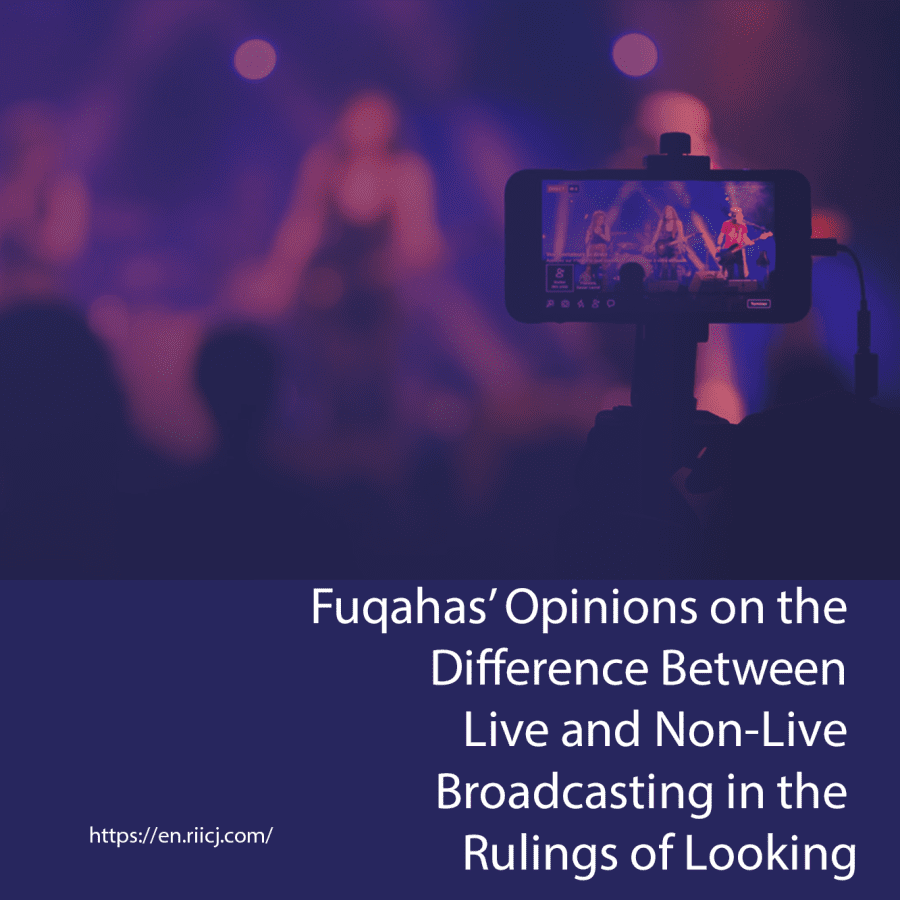Note: Many Muslim jurists had different fatwas for looking at a non-mahram and looking at his photo or image, and they distinguished between the two. With the advent of live broadcasting technology, a new issue emerged that was in between the two previous issues. Live broadcasting was neither looking at a non-mahram directly and without an intermediary, nor looking at her dead, motionless, and old image, but rather it encompassed a part of both issues. In this report, Hujjat al-lslam Muh. Sadiq lbrahimi has analyzed the jurists’ opinions on the difference between live and non-live broadcasting in the rulings of looking.
One of the issues that the obligated (mukallaf) persons are afflicted with in the current world is the ruling on looking at images of non-mahrams in the media. The question that arises for the obligated persons is whether, from a jurisprudential point of view, looking at these images is permissible according to Shari’ah law or not? Is there a difference between live and non-live images, or is the ruling on all of them the same? The result that we obtained through searching the works of contemporary jurists indicates that there are three general views among jurists regarding looking at images, whether silent or moving, living or non-living, which I will discuss below:
Looking at live broadcast images is not essentially different from looking at non-live images, and therefore their rulings are the same. This view can be divided into two main tendencies:
a) The ruling on looking at a film, whether live or non-live broadcast, is not the ruling on looking at a person, but rather the ruling on looking at a photograph; therefore, without the intention of pleasure, there is no problem. For example, two fatwas are quoted from two contemporary authorities:
Ayatullah Makarim Shirazi: “As long as it does not cause specific corruption or moral deviations, there is no problem.” [1]
Ayats al-al-lzam Bahjat and Safi Gulpayegani: “Seeing non-mahrams on television and hearing their voices is wrong if it is related to corruption and riba.” [2]
b) The ruling on watching a film, whether live or not, if the owner of the image is unknown to the viewer or a careless person, is the same as looking at a photograph; that is, it is permissible without the intention of pleasure, but if the person is familiar, it is the same as looking at the person himself; that is, with the exception of the face and palms, one cannot look, even if one does not intend to enjoy.
For example, Ayatollah Tabrizi wrote in response to the above question: “If one does not know the woman, there is no obstacle [to looking without the intention of pleasure], and if one does know the woman, the ruling on looking at a woman’s photo or film is the same as looking at the woman herself [i.e., looking at anything other than her face and body is not permissible, even without the intention of pleasure].” [3]
Also, al-Ayat al-lzam Muntazeri and Fazil Lankarani have written in this regard: “There is no problem in looking at a photo or film of a non-mahram woman, if she is reckless or unknown.” [4]
Inanimate images have the same rulings as photographs, and live images have the same rulings as people. Proponents of this view consider the ruling on looking at a non-living film to be the same as looking at a photo, but they say: Looking at a live broadcast film has the same ruling as looking at the person who owns the image; This means that if a person connects with a non-mahram through video chat, it is as if he is looking at him in person and he must observe all the rulings of looking at the body of a non-mahram; but if he records the same images and views them a few minutes later, he must observe the rulings of looking at a non-mahram’s photo, which is somewhat easier from their perspective.
For example, Imam Khumayni’s fatwa is as follows: “A film that is broadcast live has the ruling of a person, meaning that men cannot look at anything other than the faces and shrouds of non-mahram women, and women cannot look at men’s bodies; but a film that is broadcast indirectly has the ruling of a photograph; meaning that if it is anonymous, there is no harm in looking at it without causing pleasure or corruption.” [5]
Inanimate images, the rulings of photographs and live images, according to obligatory precaution, have the rulings of a person; therefore, men cannot look at anything other than the faces and shrouds of non-mahram women, with the consideration of not fearing sedition and corruption:
“There is no difference in ruling between a film that is broadcast live and a photograph; but looking at a live film, according to obligatory precaution, has the ruling of looking at a person and is different from a photograph.” [6]
[1] Makarim, Kitab al-Nikah, Vol. 1, p. 41.
[2]. Istifa’at; Safi Gulpayegani, Jami’ al-Ahkam, Vol. 2, p. 174.
[3]. Javad Tabrizi, Istifa’at, Vol. 1, p. 356.
[4]. Husayn Ali Muntazeri, Istifa’at, Vol. 3, p. 512.); Fazil Lankarani, Jami’ al-Masa’il, Vol. 1, p. 455.
[5]. Imam Khumayni, Ahkam-e Banevan, p. 32; also: Vahid Khurasani, Tawzih al-Masa’il, p. 504.
[6]. Sayyid Ali Khamene’i, Ajwibat al-Istifta’at, p. 259.
This note is part of the electronic magazine “Principles of the Jurisprudence of Performance” which was produced in cooperation with the School of Jurisprudence of Art and the Ijtihad Network website.

